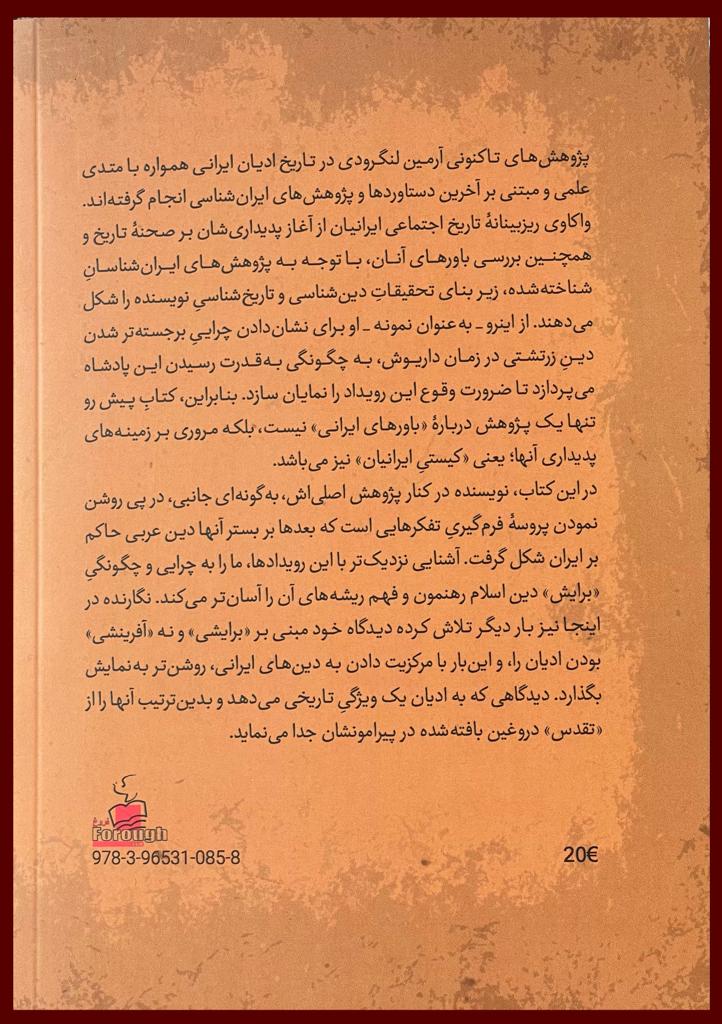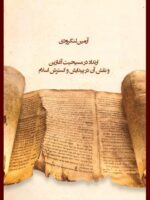کیستی ما و چیستان دین های ایرانی
«پژوهشهای تاکنونی آرمین لنگرودی در تاریخ ادیان ایرانی همواره با متدی علمی و مبتنی بر آخرین دستاوردها و پژوهشهای ایرانشناسی انجام یافتهاند. واکاوی ریزبینانۀ تاریخ اجتماعی ایرانیان از آغاز پدیداریشان بر صحنۀ تاریخ و همچنین بررسی باورهای آنان با توجه به پژوهشهای ایرانشناسانِ شناخته شده، زیربنای تحقیقاتِ دینشناسی و تاریخشناسیِ نویسنده را شکل میدهند. از اینرو – بعنوان نمونه – او برای نشاندادن چرایی برجستهتر شدن دینِ زرتشتی در زمان داریوش، به چگونگی بهقدرت رسیدن این پادشاه میپردازد، تا ضرورت وقوع این رویداد را نمایان کند. بنابراین، این کتاب تنها یک پژوهش دربارهٔ «باورهای ایرانی» نیست، بلکه مروری بر زمینههای پدیداری آنها، یعنی «کیستیِ ایرانیان» نیز میباشد.
در این کتاب نویسنده در کنار پژوهش اصلیاش، بگونهای جانبی، درپی روشن نمودن پروسهٔ فرمگیریِ تفکرهایی است که بعدها بر بستر آنها دین عربی حاکم بر ایران شکل گرفت. آشنایی نزدیکتر با این رویدادها ما را به چرایی و چگونگیِ «برایش» دین اسلام رهنمون و فهم ریشههای آنرا آسانتر میکند. نویسنده در اینجا نیز بار دیگر تلاش کرده دیدگاه خود مبنی بر ”برایشی” و نه ”آفرینشی” بودن ادیان را، و اینبار با مرکزیت دادن به دینهای ایرانی، روشنتر بهنمایش بگذارد. دیدگاهی که به ادیان یک ویژگیِ تاریخی میدهد و بدینترتیب آنها را از ”تقدس” دروغین بافته شده در پیرامونشان جدا مینماید.»
Armin Langroudi’s researches in the history of Iranian religions have always been carried out with a scientific method and based on the latest achievements and researches of Iranology. The microscopic analysis of the social history of Iranians from the beginning of their emergence on the stage of history, as well as the examination of their beliefs according to the researches of well-known Iranian scholars, form the basis of the author’s theology and historiography research. Therefore – as an example – to show why the Zoroastrian religion became more prominent during the time of Darius, he deals with how this king came to power, to show the necessity of this event. Therefore, this book is not only a research about ”Iranian beliefs”, but also a review of their phenomena, that is, ”who are Iranians”.
In this book, in addition to his main research, the author, in a side way, seeks to clarify the process of formation of thoughts that later formed the Arab religion ruling Iran. A closer acquaintance with these events will guide us to why and how Islam is ”for him” and make it easier to understand its roots. Here, the author has once again tried to show his view that religions are ”creative” and not ”creative”, and this time by focusing on Iranian religions. A view that gives religions a historical character and thus separates them from the false ”sanctity” woven around them.







